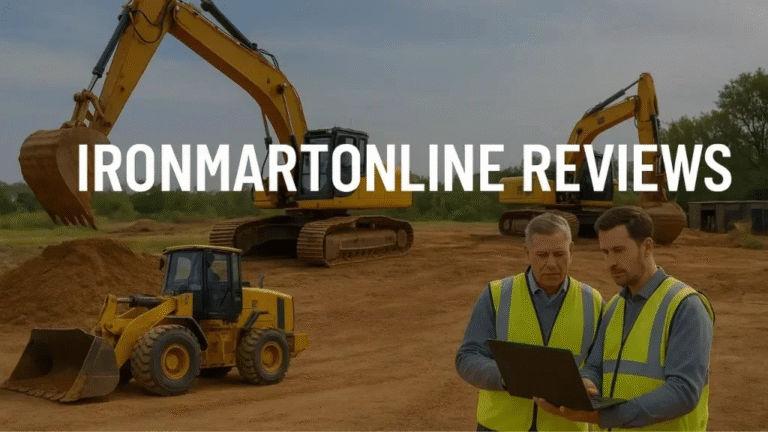
The Shifting Landscape of Warehouse Operations
The world of warehouse operations is in the midst of a transformation unlike anything the industry has seen before. Thanks to the ever-evolving needs of the global supply chain and a surge in online ordering, the way goods are handled, moved, and stored is being reimagined from the ground up. Material handling equipment is the backbone of these workflows, shaping how efficiently orders are processed and how safely workers can perform on the job. Industry experts have observed that choosing proven, innovative solutions, such as worksaver equipment, can help companies meet today’s demands and prepare for tomorrow’s challenges.
This evolution goes beyond simply keeping up with consumer demands for quicker deliveries—it’s about building robust, scalable systems capable of handling rising inventory and more frequent order cycling. Distribution centers are now pressured to do more with less, as labor shortages complicate daily operations. To stay ahead, warehouse managers invest in advanced material handling systems that offer increased throughput and adaptability, ensuring operations remain resilient despite unexpected stresses. The pathway to higher productivity relies heavily on equipment innovation, strategic planning, and a willingness to adapt to new working methods.
Automation Leads the Way
Perhaps the most significant trend in warehouse operations is the comprehensive adoption of automation technologies. Automated Guided Vehicles (AGVs), conveyor systems, and collaborative robots are now taking on repetitive, physically demanding, and time-consuming tasks, allowing workers to focus on more value-added activities. These technologies dramatically reduce manual errors and bolster operational speed, addressing both labor shortages and the push for increased productivity.
Research highlighted in a report from Supply Chain Dive confirms that automation is no longer reserved for industry giants—smaller and mid-sized warehouses increasingly see it as a vital step for survival. For example, a recent study found that warehouses implementing autonomous mobile robots reduced operational expenses by as much as 20% while boosting picking accuracy for high-volume e-commerce fulfillment. By strategically integrating automation with skilled teams, facilities can operate with greater consistency and less reliance on finding and retraining new workers. The transition is not always easy, but the potential efficiency and error reduction payoffs are hard to ignore.
Embracing Digital and Data-Driven Solutions
Digital transformation extends beyond inventory tracking, gaining actionable insights to inform everyday decision-making. Warehouse Management Systems (WMS) play a central role, integrating everything from stock location data to shipment scheduling. The latest platforms leverage artificial intelligence and machine learning to predict slowdowns, suggest routing improvements, and automate restocking, helping warehouses continually adapt and improve.
According to a thorough analysis published by Modern Materials Handling, global investments in innovative, connected material handling equipment are on track to push the sector’s worth over $200 billion by 2030. Smart warehouses now use sensors to monitor goods, equipment wear, and resource usage. With real-time dashboards, managers can spot problems before they become costly, allocate resources more intelligently, and optimize the entire value chain. These data-driven strategies contribute to smoother workflows, less downtime, and ultimately, more satisfied customers.
Sustainability and Green Equipment
Modern warehouses are increasingly judged by their environmental impact, and the shift to sustainable operations has moved to the forefront of industry priorities. Companies are replacing traditional gas-powered forklifts and pallet jacks with electric or hybrid models, reducing emissions, noise, and on-site air pollution. Adopting LED lighting, intelligent climate controls, and even rooftop solar panels is gaining traction as environmental regulations tighten and energy costs rise.
Environmentally friendly practices often deliver financial and reputational rewards. For example, switching to recyclable packaging materials and optimizing delivery routes can lower costs and carbon footprints simultaneously. Additionally, government bodies are increasingly incentivizing companies to adopt sustainable solutions, making green investment a smart business move. Many leading brands are finding that customers increasingly favor partners committed to a smaller environmental footprint, so these upgrades are also beginning to shape buying decisions.
Prioritizing Worker Safety and Ergonomics
Safety is not just a regulatory requirement—it’s a cornerstone of employee well-being and business continuity. Implementing ergonomic solutions reduces workplace injuries, improves comfort, and ultimately contributes to higher morale. Adjustable workstations, lighter and more maneuverable carts, and adjustable-height pallet lifts are now standard features in modern warehouses. Wearable technology, such as real-time posture sensors, provides an extra layer of safety by alerting both workers and supervisors to risky movements before injuries occur.
Proactive safety programs built into daily routines help foster a culture where workers feel valued and protected. This approach includes regular training sessions, emergency drills, and clear protocols for reporting equipment malfunctions. Investing in these programs reduces days lost to injury and improves staff retention. In a competitive labor market, a reputation for safety and worker support can make all the difference in attracting and keeping top talent.
Upskilling and Education: Preparing Workers for the Future
As material handling equipment grows more advanced, the need for continuous employee training becomes crystal clear. It’s no longer enough to hand someone a manual and call it a day. From hands-on workshops to interactive e-learning platforms, top-performing warehouses now make workforce development an ongoing project. Keeping up with innovations in hardware, software, and process improvement means that seasoned veterans and new hires can stay agile and productive.
Many companies have found success by partnering with local trade schools and offering tuition support for workers interested in expanding their skills. Frequent skill-building opportunities foster a sense of loyalty and investment among employees, while also equipping operations to handle change with confidence. Upskilling initiatives often pay off quickly by reducing operational errors and the need for external technical support, solidifying a competitive edge.
The Future: Flexibility and Adaptation
Now, more than ever, flexibility is a defining trait of resilient warehouse operations. Recent global supply chain disruptions have highlighted the importance of pivoting quickly, implementing alternative processes, and managing surges or interruptions with minimal chaos. Adaptable systems—including modular racking, scalable automation, and cloud-based analytics—allow facilities to adjust to demand swings, labor shortages, and environmental changes without losing efficiency.
Fostering this environment requires investment in the latest technology and a cultural commitment to process improvement and risk management. Warehouses that regularly pilot new equipment, review their data, and engage workers in solution-finding consistently outperform their peers. Change is no longer the exception; it is the rule, and those who build flexibility into their DNA will keep leading the pack.
Final Thoughts
Today’s material handling equipment is more than a collection of tools; it is the heart of a modern warehouse’s success. Innovations and advances in automation, sustainability, and safety empower warehouses to operate with greater speed, precision, and reliability. As the sector evolves, integrating data-driven strategies, sustainable practices, and continuous education will be crucial for forward-thinking facilities. Staying on top of these trends enables organizations to thrive in an increasingly complex supply chain landscape, ensuring that businesses not only keep pace but also set benchmarks for efficiency, safety, and environmental responsibility.


